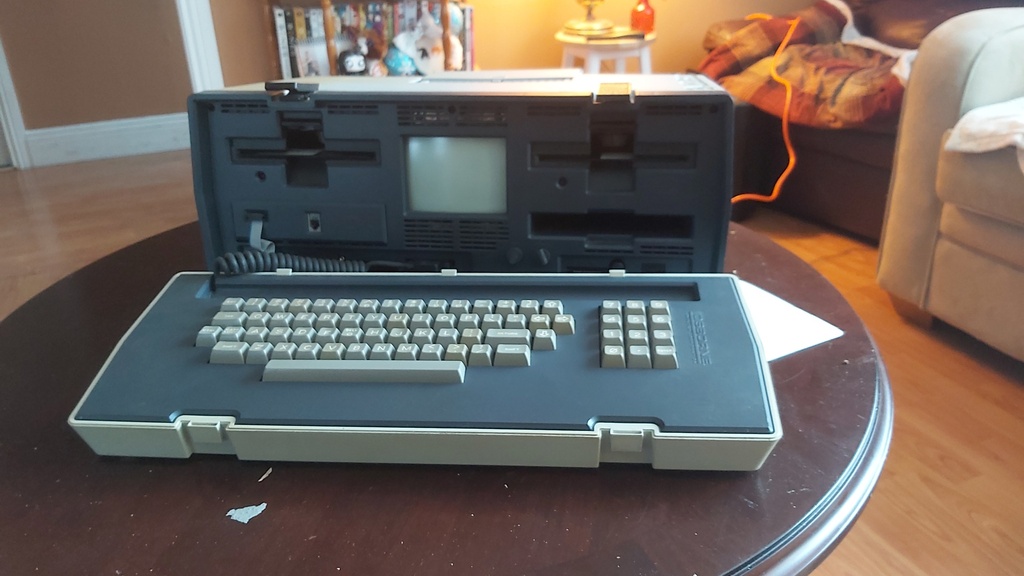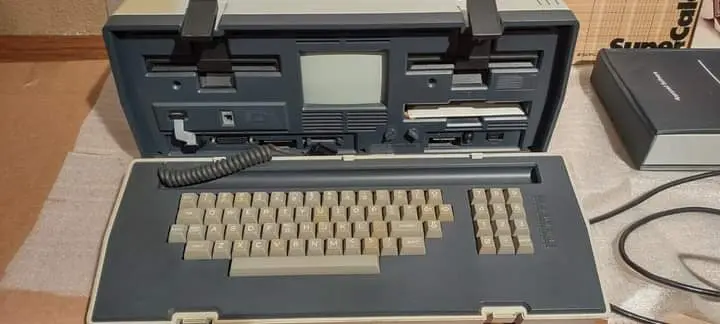Osborne 1 (1981)
The Osborne 1, released on April 3, 1981, holds the distinction of being the first commercially successful portable computer. Developed by Adam Osborne and designed by Lee Felsenstein, this pioneering device made waves in the early days of personal computing. Here are the key details:
- Specifications:
- CPU: Powered by a Zilog Z80 clocked at 4 MHz.
- Memory: Equipped with 64 KB RAM.
- Storage: Featured dual 5¼-inch, single-sided, single-density floppy drives (with an optional dual-density upgrade).
- Display: Boasted a 5-inch monochrome CRT display capable of showing 52 x 24 characters of text.
- Operating System: Ran CP/M 2.2.
- Power: Required a wall socket for power (no onboard battery).
- Portability: Although not battery-powered, it could be hand-carried when the keyboard was closed.
- Design and Portability:
- The Osborne 1’s rugged ABS plastic case and handle made it portable.
- About the size and weight of a sewing machine, it was advertised as the only computer that would fit under an airline seat.
- Despite its bulk, it was still considered a portable device due to its hand-carry capability.
- Some described it as a cross between a World War II field radio and a shrunken instrument panel of a DC-3 aircraft.
- Software Bundle:
- The Osborne 1 shipped with a large bundle of software that was nearly equivalent in value to the machine itself.
- This practice of bundling valuable software was adopted by other CP/M computer vendors.
- Competitors like the Kaypro II quickly emerged.
- Impact and Reception:
- BYTE Magazine succinctly captured the Osborne 1’s appeal: “It will cost $1795, and it’s portable!”
- The included word processing, spreadsheet, and other software alone were worth $1,500.
- Attendees at the West Coast Computer Faire were amazed by this advancement in the price/performance ratio for microcomputers.
Despite its initial success, the Osborne 1 faced challenges, and when Osborne Computer Corporation declared bankruptcy in 1983, it became a prototype victim of sudden technological crashes in high-tech economies. Nevertheless, its legacy as a groundbreaking portable computer remains intact. 🖥️👜



